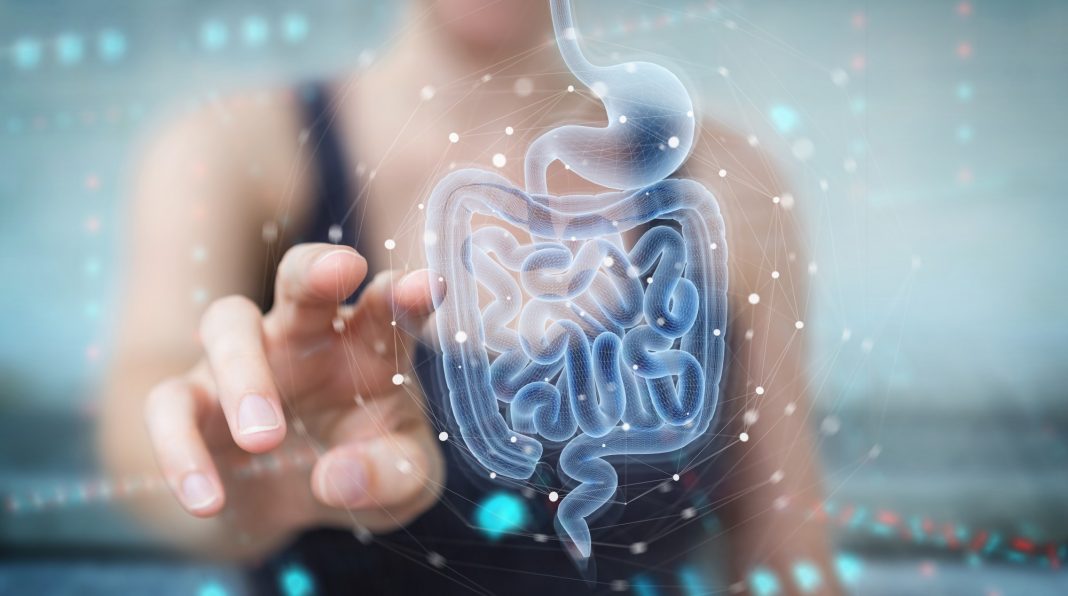Clear, glowing skin is arguably the epitome of beauty. While countless products cover, highlight, blend, accentuate, moisturise, mattify and more, it’s helpful to start with a healthy base. For that, you need to look beyond skin deep – all the way to the gut.
Danny Urbinder, the Scientific Marketing Manager of Life-Space, says the gut microbiome is a key regulator for the immune system. This is one of the primary ways the gut communicates with other tissues and organs, such as the lung, brain, and, of course, the skin.
“The skin also has its own microbiome, which results in a bi-directional communication network between the skin and the gut via the immune system,” he said.
“When our gut microbiome is out of balance [dysbiosis] our immune system responds by producing inflammation. This altered immune response isn’t necessarily isolated to the gut. The inflammation can therefore affect the skin and the skin microbiome. The outcome of this can be the development of skin conditions such as acne and dandruff.”
Dietary dos and don’ts
The food we consume doesn’t just feed our bodies, it also feeds our microbiome. If we eat foods high in carbohydrates, simple sugars and animal fats, we’ll be feeding a quite different range of bacteria compared with those that prefer a diet high in fibre and resistant starch, says Mr Urbinder.
“Foods such as fruits, vegetables, nuts, seeds and beans are a rich source of fibre that feed desirable bacteria in our gut,” he said.
“They ferment the fibre to produce health-promoting by-products, including short-chain fatty acids. This creates a balanced environment for the microbiome and sends signals to our immune system that all is well.”
If you’re looking to eat your way to beautiful skin, the first thing to remember is that what you don’t eat is just as important as what you do eat.
“A diet high in sugar and simple carbohydrates tends to promote dysbiosis, which can result in an altered immune response, inflammation and disruption to the skin and the skin microbiome,” Mr Urbinder said. “Try and limit those foods that disrupt the microbiome and drive dysbiosis.”
While healthy eating isn’t a “quick fix” – Mr Urbinder suggests it can take up to six months to change the microbiome – those who begin eating more healthily are likely to notice incremental improvements fairly quickly, which can be motivating in itself.
“You may start to notice the difference in your digestive system, and, of course, your skin may start to take on a healthier appearance,” he said.
Sensible indulgence
Coming out of the silly season, it may be hard to contemplate forgoing indulgences such as sweets or drinks for the sake of healthy skin. The good news is that while it’s important to limit alcohol and sugar consumption to look after your microbiome, there are plenty of better-for-you products on the market
“There are companies now making low sugar, non-alcoholic beverages that taste great, so you can create delicious, authentic tasting mocktails and feel confident that your gut and skin are not being affected,” Mr Urbinder said.
Healthy foods and snacks have come a long way too.
“There are plenty of recipes online for sugar-free desserts that not only taste good, but are rich in prebiotics,” he said, adding that “natural alternatives to table sugar, such as steviol and erythritol have so far been shown to have no impact on bacterial growth, yet enhance short-chain fatty acid production”.
Coconut macaroons are a favourite treat for Mr Urbinder.
“They’re made with oats, shredded coconut and almond flour – all rich in prebiotic fibre – and sweetened with steviol and erythritol,” he said. “They taste amazing.”
Good looking food
Mr Urbinder recommends eating plenty of the following to feed a healthy microbiome.
- Plant foods. “Eat a wide variety of fruits, vegetables, nuts, seeds, pulses and grains, as the prebiotic fibre in these foods will feed a healthy microbiome. Excellent sources of prebiotics include onions, garlic, artichokes, Jerusalem artichokes, jicama, green bananas, green banana flour, oatmeal, cooked and cooled rice, and cooked and cooled potatoes.”
- Antioxidants. “Getting enough antioxidants in your diet is part of what helps to combat the oxidative damage caused by UV light, air pollution, environmental toxins and inflammation. The more colourful the fruit and vegetables, the better, as these are rich in antioxidant compounds called polyphenols. Polyphenols are also powerful prebiotics that can support a healthy microbiome. When gut bacteria metabolise, polyphenols improve their utilisation, so you get an enhanced effect.”
- Fermented foods. “Sauerkraut, kimchi, yoghurt, kefir, kombucha and miso are rich in beneficial bacteria that can promote a healthy microbiome.”
- Omega 3. “Getting plenty of essential fatty acids is important, especially omega-3s, which are found in oily fish such as salmon and sardines, as well as flax seeds. Omega-3s have the capacity to limit inflammation in the body and can improve skin health and appearance.”







